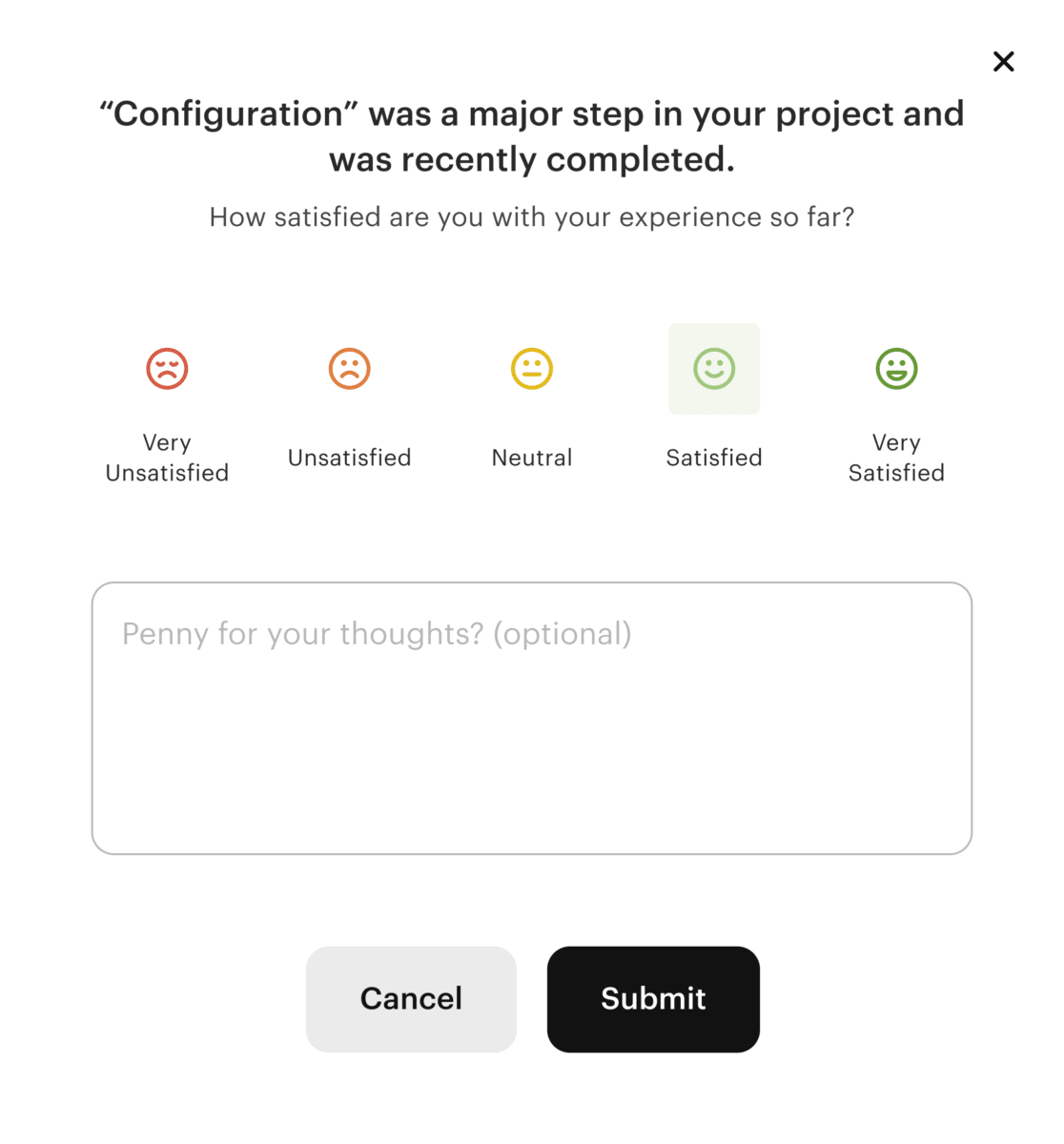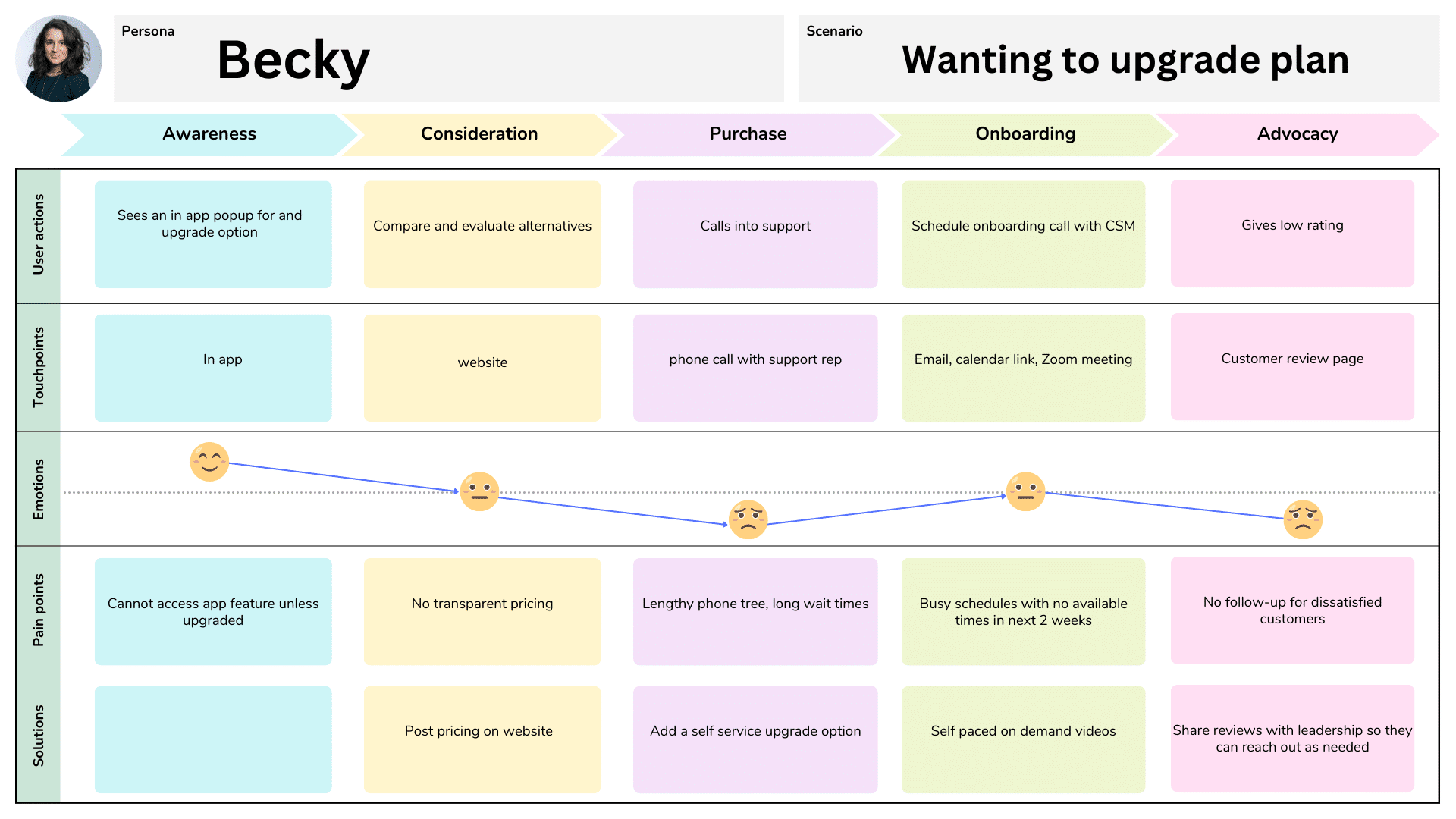Customer experience (CX) is more than just providing good service or products to your customers. It’s about creating a positive and memorable impression of your brand across every touchpoint and interaction. If done right, CX can positively impact customer loyalty, retention, and revenue. Who wouldn’t want that?
Project managers often have the goal of running a project from start to completion on time and on budget. Within that lies the opportunity to improve your customer experience through the repeated interactions that occur throughout your projects.
In this blog post, we will share four helpful tips on how to apply customer experience models to your projects, whether you’re launching a new product, service, campaign — or if you’re improving an existing one.
What is a Customer Experience Model?
A customer experience model is a framework that outlines the various touchpoints, interactions, and emotional responses that a customer may have with a brand across their entire journey. It encompasses everything from the initial awareness stage to the post-sales experience. In essence, it’s a blueprint for delivering consistently excellent customer experiences that align with your brand’s values, goals, and customer expectations.

Tip 1: Choose a Customer Experience Model
That Suits Your Project
There are many customer experience models out there, each with its own advantages and disadvantages. Some are more suited for certain industries or types of businesses, while others are more adaptable and flexible.
6 Common Customer Experience Models
- Customer journey mapping
This model helps you visualize and optimize every step of the customer journey from awareness to loyalty. It helps you identify pain points, opportunities, and moments of truth along the way. Later in this blog, you’ll see an example of a simple customer journey map.
- Customer feedback
This model helps you collect and analyze customer opinions and suggestions through various methods such as surveys, reviews, or ratings. It helps you understand what customers think, feel, and want from your brand. For example, sending a survey after a sale or completion of onboarding a new customer to your product or service. Does your project management tool allow for an easy feedback loop?
- Consumer decision journey
This model helps you influence and support customer decision-making across four stages:
- Consideration (awareness)
- Evaluation (preference)
- Buy (purchase)
- Enjoy/advocate/bond (loyalty)
It helps you tailor your marketing, sales, and service strategies according to each stage. For example, choosing to market on TikTok because your consumers already spend their time there.
- Customer care
This model helps you provide proactive, responsive, and empathetic service to customers who have issues, questions, or complaints. It helps you resolve problems quickly, effectively, and satisfactorily. For example, Nordstrom is known for setting the standard for customer care in the retail space. Does your project management tool allow for easy communication and transparency?
- Customer value proposition
This model helps you communicate how your brand delivers value to customers in terms of benefits, costs, and differentiation from competitors. It helps you attract, retain, and grow customers by meeting their needs better than others. For example, Aldi with their high-quality products and low prices creates a simple shopping experience.
- Customer loyalty
This model helps you create loyal customers who buy repeatedly from your brand, recommend it to others, and resist switching to competitors. It helps you increase retention, referrals, and revenue by rewarding customers for their loyalty. Think: Starbucks Rewards.
Determining Your Customer Experience Model
Seeing all of these models can feel a bit overwhelming, so to help narrow things down, here are a few things to consider when making your choice:
The scope and complexity of the project:
- How are you going to get the project done and how much of a burden will be placed on the customer?
- Can you make this process easier and more seamless by mapping out the customer journey?
The resources and capabilities you have:
- A project manager must have a clear understanding of the resources available to them. For example, you have a project plan to transition to a high-touch customer experience, but you lack the headcount to meet the desired outcomes, thus letting the customer experience suffer.
The data and insights you need:
- Project managers can use data to gain insights into the needs and wants of customers, leading to more informed decisions and processes.
The stakeholders and customers involved:
- Know your customers and what they expect – does your project make sense?
- Do you have your customer personas developed?
- Map and manage your stakeholders: The customer experience is created by the entire company, which means you’ll need buy-in and support from many different stakeholders to do it successfully. You’ll want to consider all departments involved.
The outcomes and benefits you expect:
- Are the benefits only internal? Consider how the project will impact the customer as well — is it possible to make it mutually beneficial?
Your CX goals:
- Know what you want to achieve before selecting a model — our next tip will dive into this further.
Tip 2: Define Your Customer Experience Goals
Customer Experience vs. Customer Service
Project managers want to plan, execute and complete their projects on time and on budget. As you start to shift your thinking to include a better customer journey, be sure to consider the main customer experience goals. It’s important for you to have an idea of what you hope to achieve with your customer experience before you select a model.
Many people confuse customer experience and customer service. After all, they both revolve around treating customers well when they interact with your brand. Customer experience and customer service are both important for building customer loyalty and retention, but they have different goals and strategies.
Customer service is focused on a specific set of scenarios and is often owned by a single department within your business. Customer service is often reactive, typically only used when a customer is dissatisfied. If a customer has an issue with your product or service, then they contact customer service.
This differs greatly from customer experience, which is proactive and aims to reach every customer. It’s also holistic and crosses all silos and departmental borders — customer experience is everyone’s responsibility.
By anticipating customers’ needs and proactively addressing them, companies can reduce the number of negative interactions that may be occurring with customer service teams. This, in turn, can reduce the workload on customer service representatives and improve the overall efficiency and effectiveness of the customer service team. How happy would your customer service team be if they didn’t have to deal with frustrated customers as often? All it takes is some planning.
During customer onboarding, what are your first impression objectives for customers and how do they align with your business and project goals? Identify the specific customer journey goals you would like your project to achieve before you begin designing.
To do so, ask yourself:
- Are you looking to increase customer loyalty?
- Are you attempting to improve customer communication transparency?
- Are you looking to increase sales?
- Are you trying to improve customer satisfaction?
- Are you trying to improve cross-selling and up-selling opportunities?
Define a Clear Vision for Success
With a clear vision of what you want to achieve, you now need to define success for your projects.
Suppose you manage to install a new phone system without any technical glitches, but with the system downtime, your customer experience suffers by not allowing customers to contact their Customer Success Managers. Would you consider that a successful project? Would your stakeholders?
Having a clear vision of your customer onboarding goals will help you select the right customer experience model for your project and set the direction for your project design and delivery. In the example above, had we included a CX goal of improving transparency and communication then we may have applied a customer care experience model to our project.
This would ensure that we built in tasks that create proactive communication efforts like notifying the customers that the phones will be down for a few hours. Or, you may decide to adjust the timeline of the project altogether, ensuring that the testing and launch of the new phone system occurs outside of regular business hours. Weaving this customer experience model into your project ensures that your CX goals stay top of mind, while also heading towards project completion.
So how does this fit together so far? If you’re tackling a complex, large-scale project aimed at building closer customer relationships, a customer journey mapping model can be used to visualize and optimize each step of the customer journey.
However, if you’re working on a simple, small-scale project focused on improving customer satisfaction within a single function or channel, a customer feedback model can be used to collect and analyze customer opinions and suggestions.
Remember that customer experience is holistic and involves everyone, so looking at the big picture is imperative. Speaking of everyone, let’s take a look at your customers and their feedback.
Tip 3: Engage Customer Feedback Early and Often
Who is going to know more about the customer’s experience than your customer? Failure to gather customer feedback during the project planning phase can lead to missing insights that could impact deliverables and outputs in a big way. Consider exploring historical data around customer feedback to see where issues have appeared before and use that to plan for ways to avoid those pitfalls in the future.
Based on insights obtained from feedback, you can now approach your project with a customer-centric approach, resulting in projects ending not only on time and within budget; but also, with a valuable customer experience.
If you’re using a customer onboarding tool like GUIDEcx, you’ll have the ability to send Customer Satisfaction (CSAT) surveys through the application. You can deploy a CSAT survey at a key milestone or after onboarding wraps up.
Be sure to regularly update your onboarding template to improve your process as you hear from your customers.
Using CSAT scores or a Net Promoter Score (NPS) can also quantify the success of your projects. These numbers empower you to translate the customer experience into measurable business data points. You can also use these metrics to compare your performance with industry benchmarks or competitors and identify areas for improvement.


Tip 4: Evaluate the Customer Journey
This tip may be the most cumbersome, but for a complex project, it could be the difference between a renewal or a cancellation. Strategizing the customer journey allows you to understand the future experience and identify any weaknesses you may need to address. Your customer journey map should identify any key interactions the customer has with your departments, services, or products. It should capture any customer thoughts, feelings, and actions during each stage. You can use data and feedback from various sources, such as those nifty surveys in Tip 3 to create a realistic and detailed journey map.
Creating a Customer Journey Map
If you’re unsure of where to start with creating a customer journey map, here are a few ways to get started, as well as a visual example. Customer journey mapping is best done after defining which customer persona your journey map is based on. Once defined, try to set some goals for what you would like to see happen at each stage of that customer’s experience.
Next, take a look at customer touchpoints — these will make up the majority of your journey map. Finally, start drawing out those existing touchpoints and the rest of the journey for the persona you identified earlier. With the goals you set, you can now start strategizing around what you’d like the future state to be. Somewhere in between the present day and future state is where your project plan has the opportunity to improve the customer experience. Where are the spots where your project can positively impact the customer journey?
For example, if you find that customers are frustrated by long wait times or poor service quality at a certain touchpoint, you can design your project plan to address those issues and improve customer satisfaction overall.
Sample Customer Journey Map
Below is a simple customer journey map of a buyer persona named “Becky.” Becky wants to upgrade her plan, and by strategizing the customer journey, you can easily see where the pain points are and how a project plan could come into play and offer solutions. To make your own, explore common customer journey mapping tools like Lucidchart, Visio, Canva, or Draw.io. If you are in the office with your team, sometimes a whiteboard and post-its will do.

Transform Projects into Positive Customer Moments with Customer Experience
It takes a village to create a truly delightful customer experience. Without a thoughtful first impression, your customer is left feeling detached from your brand and product, a risk with high costs for your organization.
Technology has made it easier than ever for customers to voice their opinions, and businesses must adapt to meet their needs and stay ahead of the competition. Don’t let your projects be the downfall of your overall customer experience. Instead, take those opportunities and turn them into positive customer moments that will create raving fans of your company and brand.
By incorporating CX into your projects, you can demonstrate your commitment to your customers — when customers feel valued and heard, they are more likely to remain loyal and recommend your brand to others. Through these four helpful tips, you can be well on your way to creating projects that deliver change while maintaining the balance of impact on your customer experience.

Kati Sangiorgi
About the Author: Kati Sangiorgi has eight years of experience in SaaS onboarding and is passionate about helping companies implement new software and processes with their teams. An Arizona native and an Arizona State University graduate, Kati earned her Bachelor’s Degree in Marketing and graduated Cum Laude. Outside work, she’s a busy mom of two and an amateur artist. You can usually find Kati listening to a true crime podcast or watching a documentary.
About Kolme Group
This blog was co-written with GUIDEcx’s premier partners at Kolme Group. Kolme is a project management consultancy that combines decades of experience and expertise in software solutions, to provide top-tier Project and Portfolio Management services for medium to large enterprises.
“Kolme Group and GUIDEcx have forged a strategic partnership aimed at revolutionizing customer experiences. With a shared commitment to excellence, Kolme Group and GUIDEcx are poised to create a new standard of customer-centricity, setting businesses on a path towards unrivaled success in the digital era.” – Drew Middleton, COO of Kolme Group
Talk With a Guide Today
Discover how GUIDEcx can help you improve efficiency by reducing your customer onboarding timeline and increasing the capacity of your project managers. Our unparalleled professional resources and unwavering commitment to excellence support our industry-leading customer onboarding solution.
- How Customer Onboarding Can Accelerate Time to Value – April 4, 2025
- Leveraging Product-Led Onboarding to Improve Customer Retention – September 14, 2023
- Defining the Four Phases of the Client Onboarding Process – September 8, 2023
